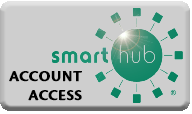Advanced Meter Information
As of 2019, over 94.8 million advanced meters (informally called “smart” meters) have been installed in the United States – accounting for over half of all U.S. electricity customers. This trend is expected to continue as utilities and customers alike realize the benefits of the new technology. The PUD, after careful evaluation of its existing meters deployed across its service area, determined that it is now both feasible and cost-effective to enter into a forward-looking meter strategy to bring the PUD’s meter technology up-to-date and be well-positioned for the future growth and needs of Clallam County PUD customers. The PUD will be rolling out advanced meter upgrades over a 4 to 5 year period that began in 2019. Advanced meters will provide many immediate benefits including:
• Enhanced customer privacy due to significantly reduced need for PUD employees to access customer property
• Consistent billing cycles and no meter estimates (sometimes used when weather or other access issues prevent meter readers from reading meters)
• More accurate bills (old meter technology such as analog electromechanical meters lose accuracy over time)
• Remote disconnect meters offer faster service for connect and disconnection of service
• Enhanced employee safety and reduced accidents
• Energy theft protection
• Enhanced outage assessment and restoration capabilities – even if you are not home, your meter will report an outage at your location, a huge benefit for “snowbirds” or anytime you’re away from home
• Improved electrical distribution system operations, including voltage control and customer power quality investigations. If an issue is reported, PUD employees may be able to diagnose a problem remotely without having to send PUD employees to the site
• Reliability improvements, including a faster diagnosis and response to outage situations
• Reduction in the PUD’s carbon footprint by reducing the need for as many vehicles making trips for meter reading, disconnect/reconnect, and trouble calls.
• A net reduction in utility operating costs of over $300,000 per year – as a public utility such savings will ultimately benefit rate payers.
Advanced Meter Fact Sheet (updated 6/1/2021)
Meter Deployment Schedule (From Meter Strategy Presentation. Subject to change as deployment progresses due to terrain or infrastructure challenges)
Some customers have concerns about radio frequency and we recognize these concerns. The advanced meter RF is 900 MHz in the unlicensed UHF band, and the average transmission is at 425 mW occurring within a range of 300ms to 2000ms once per day. This plus communication checks total up to several milliseconds per day. Based on average reads the total transmitting period over a full year will average about 12 minutes. Standing in front of an advanced meter for an entire year is roughly the same exposure to RF as a 6 minute 4G cell phone call or wirelessly streaming anything.
We invite you to review the links below for more information. If you still have concerns about remote-read or advanced meters, we have an opt-out program available.
Customers with opt-out forms on file will be notified when their route is going to be changed out so they know that they will begin to be assessed the opt-out fee, giving them an opportunity to cancel the opt-out and receive an advanced meter.
Information links:
U. S. Energy Information Administration Frequently Asked Questions
Landis+Gyr Receives UL Certification
Smart Energy Consumer Collaborative Smart Meter Myths vs. Facts
Smart Energy Consumer Collaborative Consumer Concerns Videos
U.S. Department of Energy SmartGrid.gov
Washington Utilities & Transportation Commission Smart Meter Basics
American Cancer Society – Smart Meters
The Telegraph – Do Smart Meters Really Pose A Risk to Our Health










